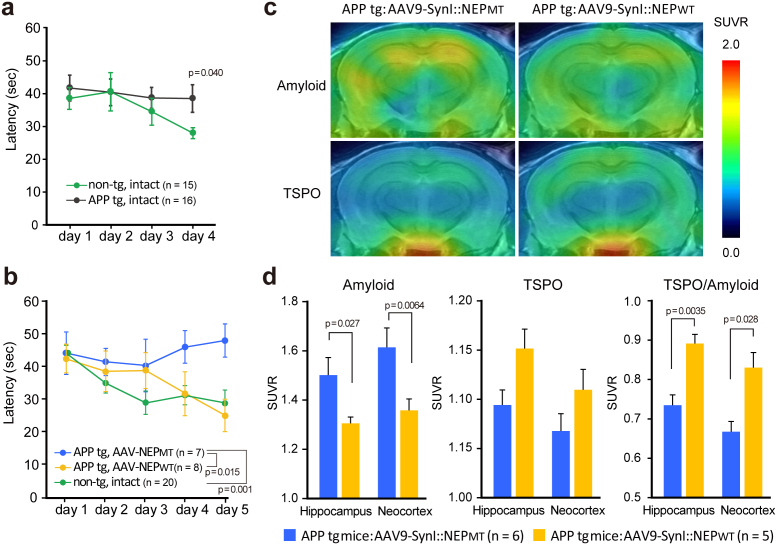Figure 4. NEP gene transfer ameliorated impaired spatial learning and memory function, amyloid burden, and modified glial activation in aged APP tg mice.
Reference memory was examined using a water maze task. Escape latency in each block to the hidden platform during a 60-sec session was measured. (a) Impaired reference memory function of APP tg mice at the ages of 15 months was detected, and they were divided into two groups, followed by administration of AAV9-SynI::NEPMT or AAV9-SynI::NEPWT (1.5 × 1012 genome copies). Data represent mean ± s.e.m. (b) Five months after the gene transfer, their memory functions were re-examined. Two-way ANOVA showed a significant main effect of neprilysin gene transfer (F(2,160) = 6.287; p < 0.05). Post hoc analysis revealed that the escape latency of rAAV9-SynI::NEPMT-injected APP tg mice was significantly different from the other groups (p < 0.05). Data represent mean ± s.e.m. (c) Plaque deposition and glial activation in living brains of APP tg mice 5 months after injection of AAV9-SynI::NEPMT and AAV9-SynI::NEPWT assessed by PET with radioligands for amyloid ([11C]PIB) (top) and TSPO ([11C]Ac5216) (bottom). Amyloid and TSPO images are derived from the same individuals. Data represent mean ± s.e.m. (d) The levels were estimated as SUVRs. TSPO upregulation relative to amyloid abundance was also determined by calculating the quotient of the SUVRs for [11C]Ac5216 and [11C]PIB (right). The main effect of the treatment was significant on amyloid load (F(1,12) = 9.17, p < 0.05) and TSPO-to-amyloid ratio (F(1,10) = 16.4, p < 0.01) but insignificant on TSPO level (F(1,10) = 4.2, p > 0.05) by repeated-measures 2-way ANOVA. The p values show significant differences between rAAV9-SynI::NEPWT and rAAV-SynI::NEPWT. Data represent mean ± s.e.m.

